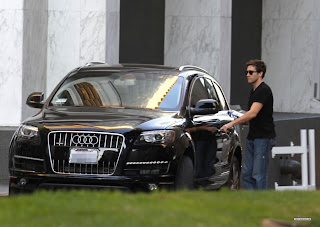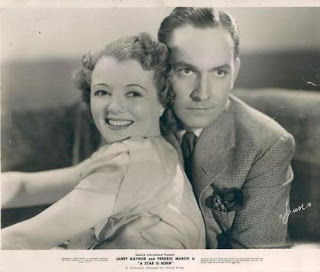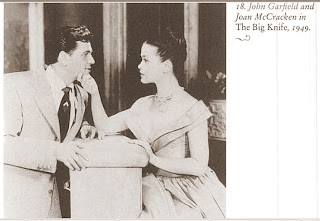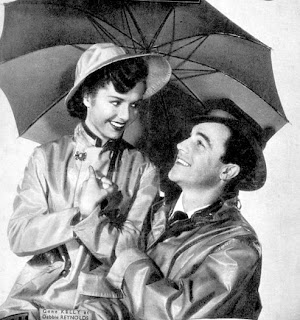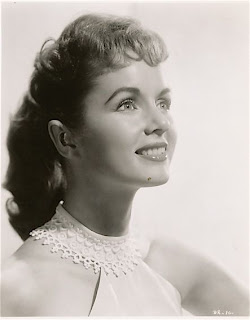 Natalie Portman will present the Golden Globes Awards 2012!
Natalie Portman will present the Golden Globes Awards 2012!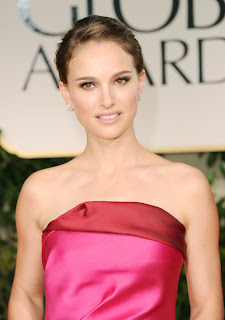 Natalie Portman attending the Golden Globes on 15th January 2012
Natalie Portman attending the Golden Globes on 15th January 2012 Joining Natalie in presentation duties will be Jake Gyllenhaal, Nicole Kidman, Clive Owen, Melissa McCarthy, Salma Hayek, and more! Be sure to tune into the Golden Globes on Sunday (January 15) on NBC! Ed Helms, Julianna Margulies and Natalie Portman will join Actor nominee Armie Hammer, SAG Awards® social network ambassador Regina King and SAG President Ken Howard as presenters at the 18th Annual Screen Actors Guild Awards®, Executive Producer Jeff Margolis announced. Source: movies.broadwayworld.com
Joining Natalie in presentation duties will be Jake Gyllenhaal, Nicole Kidman, Clive Owen, Melissa McCarthy, Salma Hayek, and more! Be sure to tune into the Golden Globes on Sunday (January 15) on NBC! Ed Helms, Julianna Margulies and Natalie Portman will join Actor nominee Armie Hammer, SAG Awards® social network ambassador Regina King and SAG President Ken Howard as presenters at the 18th Annual Screen Actors Guild Awards®, Executive Producer Jeff Margolis announced. Source: movies.broadwayworld.com Bérénice Bejo and Jean Dujardin at 17th Annual Critics' Choice Awards, on 12th January 2012
Bérénice Bejo and Jean Dujardin at 17th Annual Critics' Choice Awards, on 12th January 2012"I am thrilled. I am proud. I am over the moon," Dujardin, speaking in French, told PEOPLE about his Golden Globe and Screen Actors Guild nominations for his role as a screen star in the silent, black-and-white pastiche about Hollywood's bumpy transition from silent movies to talkies.
 Still of Jean Dujardin as George Valentin in "The Artist" (2011) directed by Michel Hazanavicius
Still of Jean Dujardin as George Valentin in "The Artist" (2011) directed by Michel HazanaviciusThe honors have been raining down all year. In the spring, Dujardin, 39, was named best actor at the Cannes Film Festival for 'The Artist' – a turn of events he says that he wishes never happened.
 "I was thrilled, proud, and very scared," he says. "I didn't want to go to get the prize because it's not my job and because I'm very shy. It's a little irrational, because you never think of the prizes. I haven't had many. I still don't know if I really received it, in fact." Source: www.peoplestylewatch.com
"I was thrilled, proud, and very scared," he says. "I didn't want to go to get the prize because it's not my job and because I'm very shy. It's a little irrational, because you never think of the prizes. I haven't had many. I still don't know if I really received it, in fact." Source: www.peoplestylewatch.com"The Artist" is the winner of three Golden Globes 2012: Best Motion Picture - Musical or Comedy, Best Performance by an Actor in a Motion Picture - Jean Dujardin, and Best Original Score - Ludovic Bource for "The Artist".
 The scene in which Jean Dujardin and Missi Pyle appear saluting their audience in the beginning of "The Artist" (2011) is very similar
The scene in which Jean Dujardin and Missi Pyle appear saluting their audience in the beginning of "The Artist" (2011) is very similar to that classic rapport between Gene Kelly and Jean Hagen in "Singin' in the Rain" (1952) directed by Stanley Donen & Gene Kelly.
to that classic rapport between Gene Kelly and Jean Hagen in "Singin' in the Rain" (1952) directed by Stanley Donen & Gene Kelly.
 "While The Artist’s Jean Dujardin does not possess the same dancing abilities as Gene, he manages to capture that same charismatic presence. So, while the dancing eliminates him as “the next Gene Kelly,” it is the Kelly charm and smile that so many critics have identified when describing Jean. And I would have to agree. While Gene’s smile stands alone (in my opinion), Jean’s is awfully nice, too. The similarities I draw from between the two men stem from that twinkle in the eye that they use to captivate their audience". Source: genekellyfans.com
"While The Artist’s Jean Dujardin does not possess the same dancing abilities as Gene, he manages to capture that same charismatic presence. So, while the dancing eliminates him as “the next Gene Kelly,” it is the Kelly charm and smile that so many critics have identified when describing Jean. And I would have to agree. While Gene’s smile stands alone (in my opinion), Jean’s is awfully nice, too. The similarities I draw from between the two men stem from that twinkle in the eye that they use to captivate their audience". Source: genekellyfans.comWith the war over, CSU (Conference of Studio Unions) garnered support from many motion picture unions. The Screen Writers' Guild, for one, divided its support, with left-leaning liberals backing CSU and right-wing members taking a more neutral stance. But all the guilds, as unions, were required to respect picket lines. In short, if CSU decided to strike outside a particular studio, no union member would cross that line. Members of the Screen Actors' Guild had a more difficult time choosing sides. Still, the strikers' determination led many actors to remain at home for the duration of the negotiations. At the time of the strike John Garfield wasn't even on the Warner lot.
 John Garfield and Lana Turner in "The Postman Always Rings Twice" (1946) directed by Tay Garnett
John Garfield and Lana Turner in "The Postman Always Rings Twice" (1946) directed by Tay Garnett Garfield was in Culver City shooting 'The Postman Always Rings Twice'. But he responded to the strike action by joining the Citizens Committee for the Motion Picture Strikers, another innocuous sounding organization that supposedly had ties to the Communist Party, and drafted a petition (protesting the violence) which was sent via telegram to the Glendale chief of police, to various civic and political leaders in the Hollywood community, and to the Warner Brothers.
Garfield was in Culver City shooting 'The Postman Always Rings Twice'. But he responded to the strike action by joining the Citizens Committee for the Motion Picture Strikers, another innocuous sounding organization that supposedly had ties to the Communist Party, and drafted a petition (protesting the violence) which was sent via telegram to the Glendale chief of police, to various civic and political leaders in the Hollywood community, and to the Warner Brothers. John Garfield was a member of the Screen Actors Guild executive board and he attempted to convince the Guild to mediate the strike. Ultimately, in 1947 the Screen Actors Guild recommended settlement through arbitration. However, by that time, most of the Hollywood guilds were against CSU and even Garfield voted against them, although as late as February 1947, he was showing sympathy for the CSU strikers. That month he participated in a benefit held at the Philharmonic Auditorium for strikers and their families.
John Garfield was a member of the Screen Actors Guild executive board and he attempted to convince the Guild to mediate the strike. Ultimately, in 1947 the Screen Actors Guild recommended settlement through arbitration. However, by that time, most of the Hollywood guilds were against CSU and even Garfield voted against them, although as late as February 1947, he was showing sympathy for the CSU strikers. That month he participated in a benefit held at the Philharmonic Auditorium for strikers and their families. It was staged with the help of him, Gene Kelly, Eve Arden, Harpo Marx, Keenan Wynn and others, all of whom performed in comedic and musical skits interspersed with dramatic sequences highlighting the dilemma the striking workers faced. Some of the things he petitioned for were worthy: he joined Gene Kelly and Gregory Peck in signing a petition for the American Crusade to Stop Lynching.
It was staged with the help of him, Gene Kelly, Eve Arden, Harpo Marx, Keenan Wynn and others, all of whom performed in comedic and musical skits interspersed with dramatic sequences highlighting the dilemma the striking workers faced. Some of the things he petitioned for were worthy: he joined Gene Kelly and Gregory Peck in signing a petition for the American Crusade to Stop Lynching.
 Among the members of The Committee for the First Amendment were John Huston, screenwriter Phillip Dunne, Humphrey Bogart, Lauren Bacall, Danny Kaye, Gene Kelly, Sterling Hayden, Marsha Hunt and John Garfield.
Among the members of The Committee for the First Amendment were John Huston, screenwriter Phillip Dunne, Humphrey Bogart, Lauren Bacall, Danny Kaye, Gene Kelly, Sterling Hayden, Marsha Hunt and John Garfield. Gene Kelly said: "We formed The Committee for the First Amendment because we thought the people in Washington had gone too far. Everyone was being branded. If they couldn't brand you a Communist then you were called 'pink'. We formed the Committee not to protect Communism, but to support the right to free speech. There was a cloud of uncertainty hanging over this town which tarred a lot of us. People were afraid. They were losing their jobs. They had wives and kids to support. They just caved in. Even the movie moguls, who knew the blacklist was wrong, gave in."
Gene Kelly said: "We formed The Committee for the First Amendment because we thought the people in Washington had gone too far. Everyone was being branded. If they couldn't brand you a Communist then you were called 'pink'. We formed the Committee not to protect Communism, but to support the right to free speech. There was a cloud of uncertainty hanging over this town which tarred a lot of us. People were afraid. They were losing their jobs. They had wives and kids to support. They just caved in. Even the movie moguls, who knew the blacklist was wrong, gave in." John Garfield and his wife Robbe (1946) were among the usual guests at Gene Kelly & Betsy's parties.
John Garfield and his wife Robbe (1946) were among the usual guests at Gene Kelly & Betsy's parties. Gene Kelly was married three times during his life. His first wife was Betsy Blair (December 11, 1923 – March 13, 2009). She was an aspiring actress/dancer from New Jersey who met Gene in 1940 when she was a day early for a night club audition. He was the choreographer for the show, and she was hired. They began dating, and were married in September of 1941. She was 17.
Gene Kelly was married three times during his life. His first wife was Betsy Blair (December 11, 1923 – March 13, 2009). She was an aspiring actress/dancer from New Jersey who met Gene in 1940 when she was a day early for a night club audition. He was the choreographer for the show, and she was hired. They began dating, and were married in September of 1941. She was 17. While married to Gene, Betsy was involved with various political groups, and would eventually be investigated by the House Un-American Activities Committee. Her most famous role was in the film Marty (1955) for which she received a Best Supporting Actress Oscar nomination and won a BAFTA award as Best Foreign Actress. Shortly after these acclamations, however, she and Gene began living separate lives, and the couple divorced in 1957.
While married to Gene, Betsy was involved with various political groups, and would eventually be investigated by the House Un-American Activities Committee. Her most famous role was in the film Marty (1955) for which she received a Best Supporting Actress Oscar nomination and won a BAFTA award as Best Foreign Actress. Shortly after these acclamations, however, she and Gene began living separate lives, and the couple divorced in 1957. Gene Kelly with his first wife Betsy Blair and daughter Kerry
Gene Kelly with his first wife Betsy Blair and daughter Kerry-"I can’t imagine an adult man not wanting marriage. Freedom is lonely... it’s sheer boredom. A little variety can’t possibly compensate for the joys of solidity, of having someone close by your side, of having children. For the joy of having a child, I’d eliminate a lot of freedom. And for a wife. A woman clips your wings a bit, but she’s worth it". –Gene Kelly, TV Radio Mirror (November 1962)
 “I never wanted to be a dancer. It’s true! I wanted to be a shortstop for the Pittsburgh Pirates. I got started dancing because I knew it was one way to meet girls.” -Gene Kelly
“I never wanted to be a dancer. It’s true! I wanted to be a shortstop for the Pittsburgh Pirates. I got started dancing because I knew it was one way to meet girls.” -Gene Kelly Gene Kelly was nominated in 1946 for Best Actor Oscar for "Anchors Aweigh" (1945) directed by George Sidney
Gene Kelly was nominated in 1946 for Best Actor Oscar for "Anchors Aweigh" (1945) directed by George Sidney Rita Hayworth and Gene Kelly in "Cover Girl" (1944) directed by Charles Vidor
Rita Hayworth and Gene Kelly in "Cover Girl" (1944) directed by Charles Vidor“I shan’t soon forget the first time I saw him, in 'Cover Girl'. When Gene did his Alter Ego number I realized that I was watching an artist. I grabbed my wife’s hand. ‘Look!’ I said. ‘Look at that!’ She maintained a loyal silence.” -Fred Astaire
 “You know, somewhere in the world is the right girl for every boy. I guess I found the one for me before I even met you. I tried, but I can’t forget her.” —Gene Kelly, 'On The Town' (1949)
“You know, somewhere in the world is the right girl for every boy. I guess I found the one for me before I even met you. I tried, but I can’t forget her.” —Gene Kelly, 'On The Town' (1949) “Gene was one of a kind. He revolutionized dancing on film… he was a disciplinarian and a perfectionist, and I should know…” -Frank Sinatra
“Gene was one of a kind. He revolutionized dancing on film… he was a disciplinarian and a perfectionist, and I should know…” -Frank Sinatra
